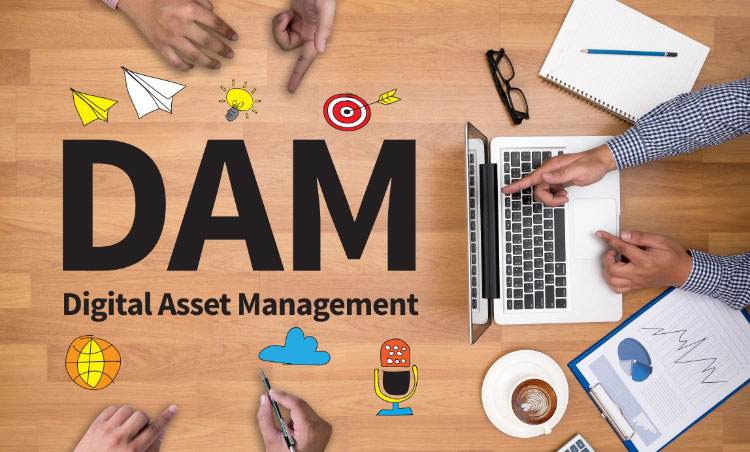6 Advantages of Working With a Specialist Digital Learning Partner
Access to Expertise and Experience
Specialist digital learning partners bring a wealth of expertise and experience to the table. They possess a deep understanding of instructional design principles, learning technologies, and learning methodologies. By partnering with them, businesses gain access to a team of professionals who specialise in creating engaging and effective learning experiences. These experts have a finger on the pulse of the latest trends and innovations in the field, ensuring that the learning program stays relevant and impactful.Accelerated Time to Market
Developing a comprehensive digital learning program in-house can be a time-consuming process, requiring substantial investments in research, design, content creation, and technology implementation. By partnering with a specialist digital learning provider, businesses can significantly reduce the time to market for their learning initiatives. These partners have existing frameworks, templates, and proven processes in place, allowing for faster program development and deployment. This accelerated timeline enables businesses to quickly meet their training needs and adapt to rapidly changing business requirements. Related Read: Custom Learning Content to Maximise Learner EffectivenessCost-Effectiveness and Resource Optimisation
Building an in-house digital learning team requires significant investments in hiring and training instructional designers, content creators, learning technologists, and other specialists. It also involves ongoing expenses related to infrastructure, learning management systems (LMS), and software licenses. Partnering with a specialist digital learning provider can be a cost-effective solution. Businesses can leverage the provider’s existing resources, infrastructure, and technology, saving on upfront and ongoing costs. This allows you to optimise your budget and allocate resources to other strategic initiatives. Related Read: How to Measure Return on Investment from a Learning ProgramCutting-Edge Technologies and Innovation
Digital learning partners are at the forefront of leveraging cutting-edge technologies and innovation in the learning and development space. They stay up to date on emerging trends such as augmented reality (AR), virtual reality (VR), gamification, and blended learning.Scalability and Flexibility
As your business grows or adapts to changing training needs, scalability and flexibility become critical considerations. A specialist digital learning partner offers the ability to scale resources and adapt to evolving requirements quickly. They can handle increased training volumes, expanding workforce sizes, or the need to incorporate new content areas seamlessly. This scalability ensures that the learning program can keep pace with your organisation’s growth and evolving learning needs without compromising quality or causing disruptions.Continuous Support and Maintenance
Digital learning partners provide ongoing support and maintenance for your learning program. They address technical issues, troubleshoot problems, and ensure smooth program operation. Additionally, they keep the learning content up-to-date, aligned with industry standards, and compliant with regulatory requirements. This ongoing support and maintenance alleviate the burden on internal teams, allowing them to focus on strategic initiatives while relying on the expertise of the partner to ensure a seamless learning experience.Conclusion
Partnering with a specialist digital learning provider brings numerous advantages to businesses seeking to optimise their learning initiatives. By accessing expertise, accelerating time to market, optimising costs, embracing innovative technologies, facilitating scalability, and benefiting from continuous support, businesses can create powerful learning experiences that enhance employee performance, drive organisational growth, and promote a culture of continuous learning.How Sify Can Help
Sify provides specialist digital learning services that offer the complete learning solution you need to attract, nurture and retain the best business talent. We understand a successful learning program is an evolving journey because you are dealing with a constantly changing audience. That is why we work in partnership with you to design, implement and optimise your learning program. Sify helps organisations succeed with their learning goals of boosting employee productivity, reducing staff turnover and improving company culture.Our Digital Learning Services
Custom
We work with you to understand the unique goals of your learning and development program. From here, our learning experts will design and implement custom learning content to meet your goals.
Off the Shelf
Extensive learning content covering thousands of courses, videos and eBooks on topics like Leadership, Management, Personal Development, Technology & Developer and Compliance.
Localisation
Our localisation and translation services will transform your content into assets that will feel natural and local for the end-users as if they have been specifically made for them.
8 Steps to Building a Successful Digital Learning Program
1. Define Clear Objectives and Learning Outcomes
The first step in building a successful digital learning program is to define clear objectives and learning outcomes. Consider the specific needs and goals of your organisation and its employees. Are you looking to enhance specific job-related skills, further leadership development, or promote cross-functional knowledge? By clarifying the desired outcomes, you can work backwards to tailor the program’s content, structure, and assessment methods accordingly.2. Conduct a Training Needs Assessment
Before launching a digital learning program, conduct a thorough training needs assessment to identify knowledge gaps and areas for improvement. This can be done through surveys, interviews, or performance evaluations. Gather feedback from employees, managers, and stakeholders to gain a comprehensive understanding of the skills and competencies that need to be addressed. This assessment will inform the selection of learning resources and topics to be included in the program.3. Choose the Right Learning Platform
Selecting the right digital learning platform is crucial for the success of your program. Look for a platform that offers a user-friendly interface, mobile accessibility, and a range of features such as interactive content, progress tracking, and certification options. Consider whether you need a pre-built learning management system (LMS) or if a customisable solution is more suitable for your organisation’s unique requirements. Evaluate potential platforms based on their scalability, security, and compatibility with your existing systems.4. Curate Engaging and Relevant Content
Engaging and relevant content is at the heart of a successful digital learning program. Here you have two options. One is custom learning content, which is bespoke, original content such as blending learning, virtual reality, augmented reality and gamification. Related Read: Using Virtual Reality for Unconscious Bias Training Case Study The second is off-the-shelf learning content, which offers pre-curated assets on a variety of subjects such as professional development, leadership, management, technology & development and compliance. You can also use a combination of both learning content types to suit your needs. My advice is to leverage a mix of formats, such as videos, interactive modules, quizzes, and case studies, to cater to diverse learning styles. Ensure that the content is kept up-to-date, aligned with industry trends, and easily digestible. Regularly update and refresh the content to keep learners engaged and motivated.5. In-house Resources vs a Digital Learning Partner
Ultimately, the decision to build and maintain a digital learning program in-house or with a partner depends on your resources, expertise, specific needs, and strategic priorities. With both options, developing and maintaining a learning program requires significant investments in terms of time, expertise, technology, and dedicated staff. Also, scaling a program to accommodate a growing workforce or expanding training needs should be a consideration. Two key advantages of a specialist digital learning partner are usually their experience and scale. They give you access to their expertise, experience, and best practices in designing and delivering effective digital learning programs. Secondly, partners can often scale resources and adapt to changing training needs quickly, making it easier to accommodate a growing workforce or evolving business requirements. Related Read: How to Measure Return on Investment from a Learning Program6. Drive Interactive and Collaborative Learning Experiences
Promote interactive and collaborative learning experiences within your digital program. Incorporate discussion forums, chat functionalities, and social learning features to encourage knowledge sharing and peer-to-peer engagement. Facilitate virtual discussions, group projects, and online communities to foster a sense of connection and collaboration among learners. Encourage learners to provide feedback, ask questions, and share their experiences to create a dynamic and supportive learning environment.7. Implement Continuous Assessment and Feedback Mechanisms
Continuous assessment and feedback mechanisms are vital for measuring the effectiveness of your digital learning program. Incorporate formative assessments throughout the program to evaluate learners’ progress and understanding. Use quizzes, simulations, and practical exercises to reinforce learning outcomes. Collect feedback from learners to identify areas of improvement and make necessary adjustments to the program. Regularly analyse data and metrics to measure the program’s impact on employee performance and overall organisational success.8. Encourage Continuous Learning and Development
A successful digital learning program should not end with completion certificates. Encourage a culture of continuous learning and development within your organisation. Provide opportunities for further skill-building, advanced certifications, and access to additional resources. Promote the integration of learning into employees’ daily workflow and encourage them to set personal learning goals aligned with their career aspirations. Recognise and reward employees who actively engage in continuous learning, creating a culture that values professional growth. Related Read: The Key Benefits of Digital Learning within a Learning ProgramConclusion
Building a successful digital learning program requires thoughtful planning, strategic execution, and a commitment to continuous improvement. By following the steps, we have outlined in this article, it is a great starting point for you to create a powerful learning ecosystem that empowers employees and drives organisational success. Embrace the digital learning revolution and unlock the potential for growth and development within your workforce.How Sify Can Help
Sify provides specialist digital learning services that offer the complete learning solution you need to attract, nurture and retain the best business talent. We understand a successful learning program is an evolving journey because you are dealing with a constantly changing audience. That is why we work in partnership with you to design, implement and optimise your learning program. Sify helps organisations succeed with their learning goals of boosting employee productivity, reducing staff turnover and improving company culture.Our Digital Learning Services
Custom
We work with you to understand the unique goals of your learning and development program. From here, our learning experts will design and implement custom learning content to meet your goals.
Off the Shelf
Extensive learning content covering thousands of courses, videos and eBooks on topics like Leadership, Management, Personal Development, Technology & Developer and Compliance.
Localisation
Our localisation and translation services will transform your content into assets that will feel natural and local for the end-users as if they have been specifically made for them.
Role of Enterprise Managed Wi-Fi in the Era of IoT and Smart Devices
In the rapidly evolving landscape of the Internet of Things (IoT) and smart devices, reliable and efficient connectivity is paramount. Managed Wi-Fi services play a crucial role in enabling seamless communication and data exchange between IoT devices. The explosion of mobility & BYOD, enterprise virtualized applications moving to the cloud, increased use of multimedia-rich applications within the enterprise, and infrastructure modernization are a few of the core business drivers for increased adoption of enterprise managed Wi-Fi services.
With unprecedented advancements in IoT, data modeling, and AI/ML, there is a consistently growing focus on edge computing and its benefits. Enterprises are accelerating efforts to move to the cloud for on-demand computing, capacity, scale, better reach, scalability, and higher availability. Additionally, the managed Wifi services eliminate the traditional Wi-Fi challenges like lack of uniform access policy, no visibility into the wireless network, inadequate protection against wireless threats, complex or tedious onboarding process, and lack of visibility on user groups.
According to Marketsandmarkets, the global edge computing market size as per revenue surpassed $44.7 billion in 2022 and can rise to $101.3 billion by 2027 at a CAGR of 17.8% for the forecasted period (2022-2027).
This blog explores the significance of Enterprise Managed Wi-Fi services in supporting the proliferation of IoT and smart devices, the challenges they address, and the benefits they bring to businesses and consumers.
- Connectivity and device management
Managed Wi-Fi services offer a fully managed, secure wireless platform integrating Information Technology (IT), Operation Technology (OT), and people. It provides a robust infrastructure for connecting and managing a multitude of IoT devices. It offers a cloud-based centralized management platform with control and monitoring capabilities enabling enterprises to configure and manage their IoT devices efficiently. From provisioning and onboarding to security protocols and firmware updates, these services streamline the device lifecycle, reducing operational complexities and enhancing overall device management. - Security and data protection
Managed Wi-Fi services enable a security posture which is crucial in the IoT landscape. The managed Wi-Fi services offer robust security features to protect IoT devices and the data they generate. By processing sensitive data locally or within a private network using network segmentation, edge devices can minimize data exposure to potential cyber threats as they’re isolated from other network resources. Managed Wi-Fi services also enable regular security updates and patches to address emerging threats, enhancing the overall security posture of IoT deployments. - Bandwidth management
With the growing adoption of connected devices, scalability becomes a critical factor as transmitting a large amount of data to the cloud for processing can strain network bandwidth and incur significant costs. Enterprise Managed Wi-Fi services are designed to handle large-scale deployments enabling enterprises to seamlessly scale their IoT networks. Enterprises can prioritize critical applications and optimize network resources using advanced bandwidth management techniques to ensure IoT devices receive the optimal bandwidth for their operations, preventing congestion, maintaining smooth communication between devices, and more efficient network utilization. - Reliability and performance
IoT applications and Smart devices often require real-time data exchange and low-latency connectivity. Managed Wi-Fi ensures high reliability and performance for IoT devices by optimizing network configurations and minimizing interference. They employ techniques like load balancing, channel selection, and Quality of Service (QoS) prioritization to maintain a stable and responsive Wi-Fi network. Edge computing reduces the latency required for sending data to a remote cloud server for processing. By processing data at the edge of the network, closer to the devices generating the data, response times can be significantly reduced. It is important for applications that require real-time or near-real-time processing, such as industrial automation and remote monitoring. - Analytics and insights
Enterprise Managed Wi-Fi enables real-time analytics into network performance and device behavior, giving enterprises decision-making capabilities at the network edge. They collect and analyze data on network traffic, device connectivity, and usage patterns, offering actionable intelligence to optimize network resources and improve overall IoT operations. These insights can help identify potential bottlenecks, optimize device placement, and enhance user experiences. Additionally, analytics-driven predictive maintenance can proactively detect and address anomalies, reducing downtime and increasing the lifespan of IoT devices. - Scalability and cost-efficiency
Edge computing allows for distributed computing resources, enabling scalability and cost-efficiency. Instead of relying solely on centralized cloud infrastructure, edge devices can share the computational load and distribute the processing tasks. It can result in reduced network congestion, lower costs associated with cloud resources, and improved scalability to accommodate the increasing number of IoT devices and data volumes.
Wrapping up!
With the growing digital landscape and IoT integration across enterprises, the need to deliver secure, seamless customer and employee experiences become a top priority. Enterprise Managed Wi-Fi services provide a reliable and secure connectivity infrastructure to deliver seamless device management, ensure scalability, optimize network resources, quick & accurate decision making, enhanced production planning, logistics, complete mobility for your workforce, and lower IT support costs.
As the IoT landscape continues to expand, Managed Wi-Fi services will remain crucial in delivering seamless and efficient connectivity for a wide range of applications, enhancing productivity, efficiency, and user experiences.
What is the Best Approach to a Major IT Change Project?
Continuous Incremental Change
The idea of moving IT applications and resources to increase operational efficiency may seem abstract to CPI. But IT change programs can be the catalyst for delivering a continuous business development cycle strategy. This can be a key foundation for the best approach strategy if you want an IT service change programme to deliver on an ongoing basis. Some of the best examples of businesses delivering sustainable IT change are where there has been a culture that embraces continuous incremental change. This is not to say these organisations are slow at improvement, but business and IT change can take a greater effect when mandated across multiple teams with a common focus on a goal of improvement. I have also seen an attitude towards risk reduction on larger projects with more people within cross-functional roles working within small groups of three and four.“Leaders must understand the engine room’s complex systems while being sensitive to those who toil in them. Specialising in one while passing on the other will no longer suffice. Instead, leaders must stretch in both directions.”
Gregor Hohpe, AWS Senior Principal Evangelist
Succeeding in Economies of Speed
One of the best ways I’ve seen this explained was by Gregor Hohpe, AWS Senior Principal Evangelist. In his talk, “Succeeding in Economies of Speed”, he explained his view of achieving transformation success by using “four levers for change”. I was able to draw some parallels with some of Gregor’s content that resonated with some of our own findings. 1. Stop Thinking of Delivering One-off Projects As in one single and significant effort of change, only to then return to business as usual. Instead, organisations should be thinking of transformation more as many continuous efforts of improvement where there is no end-running state and where change is normal. To put this in context one of the biggest blockers in the initial stages of transformation can be lobbying the board for support and their trust to invest time, money and resource into a major IT change programme. Whilst the instigators of change are busy making the business case for the best technology platform and cloud provider they are often at odds with the rest of the operational teams when it comes to potential impact, disruption and reputation loss. 2. The Classic IT Conflict Here is where operational folk require harmonisation and standardisation to keep a smooth-running ship whilst the business is demanding change through Innovation and agility. Planning for a major change in one go that will significantly affect how an organisation’s customers, partners and employees will access its resources will always need careful consideration and rightly so. Disruption brings with it high costs and risks. That is often the only approach for some when a compelling event such as a major incident, a pandemic, building lease expiry, etc, occurs and the time to act is short. What might be the best approach? If you were to ask that question of a Business Management Consultant some may talk first about understanding a leadership team’s attitude to risk and workforce culture. Whilst those attributes are important, when we talk to our clients, we look at the state of business readiness for a planned move or change. By this, we mean everyone across all affected business units is engaged and ready to embrace the proposed change. Technology is usually the easy part, but people and cultures take longer to adapt. So could the idea of changing the environment and continuing to improve on efficiency not always be one big project of disruption but integrated within usual working practices? Let me be clear here, I don’t have all the answers to how to divide up your workforce from existing departmental workgroups into multiple smaller teams with more team leads. It may sound more bureaucratic, but according to AWS when a smaller team is aligned and can work as cross-functional groups, this can stimulate faster activity with actionable insights. AWS also refers to this approach as one of its levers for change. 3. Moving Organisational Charts to Flywheels The effect of more work groups that are aligned means that change programmes now become business practices where decisions can be made locally and more frequently. Much of the work we do with our clients is helping them make that first step towards IT change. Taking on the smaller lower-risk tasks at first (e.g., running a pilot or proof of concept) will help stimulate the art of the possible. We consider this type of experimentation activity healthy. But only if it is done once because it’s seen as disruptive and done in isolation from the rest of the business. It will seldom drive a desire to keep on experimenting and trying out new things regularly. Related Read: Download the ebook to rethink and revamp your operating models to realise cloud technology’s full potential.Conclusion
To foster a culture of continuous innovation requires some lateral business thinking. Moving to a cloud operating model with fewer constraints from an incumbent will have its challenges. Operational teams that function as smaller work groups are one key step. Those teams must set common goals and process exceptions that allow freedom to step out and try new things. AWS’s customers agree that this can promote innovation and culture to embrace constant change. This dispersed team formation can allow more decision-making to be done more frequently by taking smaller calculated risks. Decisions can be more localised down to a group lead or individual allowing for more immediate actionable results. When tasked with evaluating a move of your IT applications for cost savings and efficiency think first about what outcomes the business wants and needs. Questions you should consider:- Are you just trying to make one part cheaper or faster?
- Do you want to revolutionise the way people work and engage with customers?
- How do you map out the journey rather than build a project plan?
- Do others in the business have sight of the journey that you want to take them on?
- How motivated and ready is your business to try something new?
- And keep on trying?
“We are operating in a world that is constantly changing and we have to create a culture and an environment in our teams that can adapt and take advantage of this world in which we live.”
Miriam McLemore, AWS Enterprise Strategist
How Sify Can Help
Sify is ideally placed to help businesses build a sustainable, fully optimised cloud infrastructure that meets long-term business needs. Sify offers deep expertise in all areas of cloud and IT infrastructure, combined with proven methodologies and frameworks to help analyse, design and optimise cloud environments. Our proven experience and expertise have delivered for organisations seeking to optimise their cloud infrastructures, including reducing costs and ensuring resources are right sized, accelerating deployment time for new applications, improving alignment between business functions and helping firms integrate new cloud-based technologies such as AI or analytics.The Key Challenges We Solve
With a heritage in IT Infrastructure, Sify has grown over two decades to provide a one-stop engagement across networks, data centre, cloud, digital and IT services. Sify enables you to build an IT infrastructure that underpins business profitability, by delivering flexible expertise to fill IT skills gaps, and by deploying, managing and optimising complex hybrid environments to deliver the right combination of flexibility, security and affordability. Here are the key challenges our Managed Services can help your organisation solve:
Optimisation
Future-proof your business by optimising your use of cloud technology
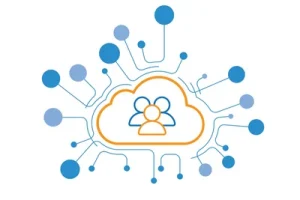
Resources
Increase responsiveness with access to the right scale and calibre of specialist IT skills as and when you need them
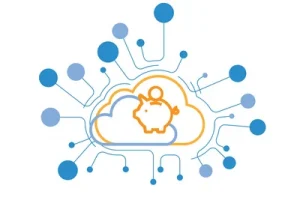
Cost Savings
Make your IT budget go further by lowering your costs and becoming more efficient
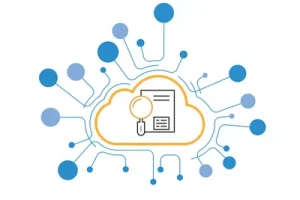
Reduce Risk
Control your risks by ensuring the security and resilience of your IT infrastructure
5 Benefits of Using an IT Partner to Support Cloud Optimisation
IT Expertise and Technical Proficiency
One of the crucial qualities of a good IT partner is their depth of IT expertise and technical proficiency. They possess a comprehensive understanding of multiple cloud platforms and architectures such as Google, Microsoft Azure, Oracle and AWS. Whether it’s public, private, or hybrid cloud, the best IT partner for cloud optimisation has the knowledge and experience to assess the unique needs of your organisation and recommend the most suitable solution. Related Read: Maximising the Benefits of Managed Cloud IT EnvironmentsContinuous Innovation
A good IT partner stays updated with the latest trends and advancements in cloud technology. They understand emerging technologies such as containers, serverless computing, and artificial intelligence (AI), and can provide guidance on effectively leveraging these innovations. Their expertise extends to areas such as cloud security, data management, performance optimisation, and scalability. With their technical expertise, a partner ensures the cloud IT environment is designed, implemented, and maintained in a way that aligns with your organisation’s objectives.Strategic Guidance
The best IT partners go beyond technical proficiency by serving as strategic advisors. To successfully achieve this, a partner needs to possess the business acumen to align cloud strategies with your organisation’s overall goals. The first step should be to conduct a thorough assessment of your existing IT environment. Step two is a consult-led approach to understanding your company’s future aspirations. From there, a roadmap for optimising your cloud IT infrastructure should be developed. This aligns your goals with the partner’s capability and resources to provide a blueprint for your cloud journey.83% of organisations cited lack of resources/expertise as one of their top cloud challenges.
Implementation and Support
An IT partner will work closely with your IT team to ensure a seamless transition to the cloud environment where necessary. From provisioning and configuring cloud resources to migrating applications and data, they handle the technical complexities, minimising disruption to business operations. Furthermore, an IT partner provides ongoing support and maintenance services. They proactively monitor the cloud infrastructure, identifying potential issues, and resolving them promptly. Regular performance optimisation, resource management, and capacity planning are integral aspects of their services. Their expertise in troubleshooting and incident management ensures a high level of availability and reliability for the cloud infrastructure.Flexibility and Scalability
The cloud offers unparalleled scalability and flexibility, and an IT partner capitalises on these benefits. They understand that your business requirements change over time, and the cloud environment must adapt accordingly. Whether scaling resources to handle sudden spikes in demand or optimising costs during periods of low usage, an IT partner helps organisations achieve optimal resource allocation. An IT partner also assists in implementing automation and orchestration solutions to streamline processes and improve efficiency. They enable your organisation to leverage cloud technologies to automate routine tasks, reducing manual effort and enhancing productivity. This agility ensures that your IT environment remains responsive to your ever-evolving business needs. Related Read: Why is Cloud Optimisation Crucial?Conclusion
In the age of digital transformation, optimising cloud IT environments is crucial for all organisations to stay competitive and meet evolving customer demands. An IT partner plays a vital role in this journey by offering guidance, expertise, and services that enable organisations to harness the full potential of the cloud. Their technical proficiency, strategic guidance, implementation support, and focus on flexibility and scalability make them an invaluable asset. By using an IT partner, you can confidently navigate the complexities of cloud computing and achieve a robust, efficient, and future-ready IT environment.How Sify Can Help
Sify is ideally placed to help businesses build a sustainable, fully optimised cloud infrastructure that meets long-term business needs. Sify offers deep expertise in all areas of cloud and IT infrastructure, combined with proven methodologies and frameworks to help analyse, design and optimise cloud environments. Our proven experience and expertise have delivered for organisations seeking to optimise their cloud infrastructures, including reducing costs and ensuring resources are right sized, accelerating deployment time for new applications, improving alignment between business functions and helping firms integrate new cloud-based technologies such as AI or analytics.The Key Challenges We Solve
With a heritage in IT Infrastructure, Sify has grown over two decades to provide a one-stop engagement across networks, data centre, cloud, digital and IT services. Sify enables you to build an IT infrastructure that underpins business profitability, by delivering flexible expertise to fill IT skills gaps, and by deploying, managing and optimising complex hybrid environments to deliver the right combination of flexibility, security and affordability. Here are the key challenges our Managed Services can help your organisation solve:
Optimisation
Future-proof your business by optimising your use of cloud technology

Resources
Increase responsiveness with access to the right scale and calibre of specialist IT skills as and when you need them

Cost Savings
Make your IT budget go further by lowering your costs and becoming more efficient

Reduce Risk
Control your risks by ensuring the security and resilience of your IT infrastructure
How to choose the right data center service provider for your needs
During the COVID-19 pandemic, it became increasingly difficult for organizations to manage their in-house data centers due to challenges with scalability, break/fix support, and operations and maintenance staffing requirements. As a result, many organizations moved their in-house data center to a colocation provider and some of their applications to public clouds.
Modern-day data center powerhouses provide not only the necessary infrastructure and state-of-the-art technology but also advanced data analytics and automation capabilities. They offer streamlined operations, business continuity, reduced Capex/Opex, flexible engagement models, superior end-customer experience, support for business expansion, and accelerated digital transformation, among other outcomes.
Selecting the right data center: Key factors in play
Data center service providers typically offer an extensive array of services to accommodate diverse customer requirements. These include on-premise solutions, colocation options, wholesale and retail offerings, hyperscale capabilities, as well as specialized offerings like built-to-suit (BTS) data centers, green data centers, and comprehensive managed services. Businesses can find tailored solutions that align with their specific needs and preferences. It is important to choose the right data center service provider that can provide such integrated services, based on your business objectives and digital priorities.
[Interested to know more about Sify’s world-class data center facilities? Learn more]
Here are some factors to consider when selecting a data center service provider:
- Scalability: Rack space is a critical and limited commodity for many service providers. Selecting world-class data center providers with the capacity to build campuses capable of accommodating 8,000+ racks and 50 MW IT capacity, for example, will enable businesses to plan their scale-up within their choice campus. They also stand to benefit from a robust support/service stack and comprehensive monitoring of the data center infrastructure.
- Security: Be sure to prioritize data centers with robust security systems. IT infrastructure protection, including data security through encryption, firewalls, intrusion detection, and prevention, needs to be implemented – at the very minimum. Your data center service provider should also have multilayer physical security from the perimeter wall up to the cage, including mantraps, turnstiles, and biometric access control, in addition to surveillance cameras and security personnel, to restrict unauthorized individuals from entering secure areas or accessing confidential information.
- Network connectivity: Choose a data center provider with excellent network connectivity, including multiple internet service providers (ISPs) offering IP transit nodes, high-speed connections, multi-cloud connectivity, data center interconnectivity, and connectivity to customer premises. Data centers should have at least 3-4 fiber entry paths to the building, ensuring seamless connectivity and resilience. Additionally, the presence of low-latency cloud on-ramp services, including cloud access nodes, facilitates fast and direct interconnection with public cloud applications. These aspects collectively contribute to creating a robust, efficient, high-performing, and well-connected data center environment.
- Certificates, SLAs, and compliance: When selecting a data center provider, the importance of having the necessary certificates and service level agreements (SLAs) cannot be overstated. Certifications from industry authorities are highly desirable as they validate the provider’s adherence to industry best practices, process reliability, and security standards. A tier-3 data center with ISO 27001, ISO 20000, PCI-DSS, SoC 1, SoC 2 and ISO 1400, and ISO 50000 certifications is ideal. With its robust compliance framework, 99.99% uptime, and clear SLAs outlining performance commitments, Sify’s data centers deliver the highest levels of security, operational excellence, and environmental responsibility to customers.
- Industry experience: Data centers that have subject matter experts across functions can prove instrumental in managing diverse workloads. Extensive cross-industry experience gives them the ability to address the unique requirements of various sectors, such as finance or healthcare. For example, as a leading data center service provider in India, Sify has extensive experience across diverse industry sectors. Sify’s digital data center infrastructure services offer real-time visibility, measurability, predictability, and service support specifically required by different industries to offer customers high availability and seamless experiences.
- Green power: Many organizations today have committed to ESG goals, such as carbon neutrality, waste reduction, and power conservation. In this context, it becomes important to choose a data center provider that is invested in renewable energy, achieved by signing Power Purchase Agreements (PPA). Solar and wind power are increasingly viable options for clean energy. By choosing a data center service provider that adopts sustainable measures including renewable power, energy-efficient equipment, and practices, your business can achieve environmental goals while benefiting from competitive energy costs.
Adherence to safety practices, rules, and regulations are also key EHS considerations. Leading green data center service providers, like Sify, invest in transparent, environmentally conscious, and ethical business practices, adhering 100% to local and global regulations, and outperforming the competition when it comes to sustainability, corporate social responsibility, and people practices.
[Going green? Know how Sify’s green data centers are pushing the envelope on sustainability. Learn more] - Data center footprint: Data centers strategically located in multiple regions ensure low latency and high-speed network connections, enabling efficient data transmission and improved user experience. A widespread presence allows data centers to establish diverse network routes and redundancy, minimizing the risk of network failures or disruptions.
- Partnership with hyperscalers: Hyperscale partnerships enable data centers to offer seamless integration with leading cloud platforms, offering flexible hybrid cloud solutions and enhanced performance. Ensure you choose a service provider that banks on the power of partnerships and leverages the sharing of expertise and resources to stay at the forefront of technological advancements.
- Automation and innovation: AI/ML-driven automation is increasingly important in developing innovations that optimize operations, reduce costs, enhance performance, improve reliability and sustainability, and elevate service quality. Integration of AI/ML in vendor performance evaluation and SLA management, including metrics like MTTR and MTBF, further strengthens operations. For instance, Sify’s AI/ML capabilities have contributed to significant improvements of over 20% in project delivery turnaround time, showcasing the tangible benefits of data analytics in the data center domain.
- Backup and DR: It is essential to consider the risk of natural disasters such as earthquakes, floods, hurricanes, or wildfires. Select a location with minimal risk to ensure the safety and longevity of your IT infrastructure. It is also crucial to select a data center service provider with adequate backup and disaster recovery (DR) capabilities. This ensures that in the event of an unforeseen incident, the data center can quickly recover operations with little or no data loss.
Wrapping up! While these parameters will provide you with a solid basis for comparison, allow yourself to make the final decision based on your business’s specific objectives. Remember, there’s no one-size-fits-all approach when it comes to choosing a data center service provider.
As India’s pioneering data center service provider for over 22 years, it has been Sify’s continuous endeavor to innovate, invest in, and integrate new-age technologies. Learn more about how our state-of-the-art data centers have been delivering transformative business value to enterprises across the globe.
How to Manage the Escalating Costs of a Cloud IT Environment
Analysing Cost Drivers
The first step in managing escalating costs is understanding the factors contributing to them. You should perform a comprehensive analysis of your cloud usage patterns, resource allocation, and configurations. This analysis will enable you to identify areas of overspending, underutilisation, or inefficient architecture. Pinpointing cost drivers is the first step to developing targeted optimisation strategies.Rightsizing Resources
Rightsizing resources involves matching the allocated resources to the actual needs of the applications and services. Many organisations tend to overprovision resources, resulting in unnecessary costs. By rightsizing, you can optimise your IT environment, eliminating wasted resources and reducing expenses. This approach may involve scaling down instances, adopting auto-scaling mechanisms, or choosing lower-cost alternatives for specific services.Utilising Cost-Effective Pricing Models
The major cloud service providers offer various pricing models, and so you should evaluate and select the most suitable options for your requirements. Utilising reserved instances, spot instances, or serverless computing can significantly reduce costs. Regularly reviewing pricing options allows you to take advantage of new offerings or changes, ensuring you will benefit from the most cost-effective solutions available. Related Read: Maximising the Benefits of Managed Cloud IT EnvironmentsAutomating Infrastructure Management
Automation plays a crucial role in managing and optimising cloud-based IT environments. By automating provisioning, scaling, and resource management tasks, you can streamline operations and reduce costs associated with manual intervention. Automated systems can monitor and optimise resource allocation, detect, and resolve issues promptly, and prevent unnecessary expenses due to human error or oversight.Implementing Monitoring and Cost Management Tools
Effective monitoring and cost management tools are vital for gaining insights into resource usage and cost trends. These valuable tools will provide you with a clear understanding of where costs are accumulating and help identify potential areas for savings. By setting up alerts for unexpected spikes in usage or costs, you can take immediate action to control expenditures and optimise resource allocation.Optimising Data Storage
Storage costs often contribute significantly to escalating cloud expenses. You need to regularly review your data storage strategy to identify opportunities for cost optimisation. This may involve implementing tiered storage options, such as moving infrequently accessed data to lower-cost storage tiers or archiving rarely used data. By adopting efficient data management practices, you can reduce storage costs without compromising accessibility or compliance requirements. Related Read: Build Your Bespoke Data Centre Environment with SifyImplementing Cost Allocation and Governance
Establishing cost allocation practices is essential so you can assign cloud costs to specific departments, teams, or projects. This promotes accountability and helps identify areas of excessive spending. Implementing governance mechanisms ensures adherence to cost management policies and compliance with budgetary constraints. By promoting a culture of cost awareness and responsibility, you can optimise your cloud spending.Continuous Optimisation and Review
Cloud environments evolve over time, and so must you by continuously optimising your IT infrastructure. Regular evaluation of usage patterns, cost trends, and technological advancements is crucial to identify opportunities for further cost optimisation. By staying informed about new features, pricing models, and best practices, you can adapt and refine your strategies to achieve ongoing cost-efficiency. Related Read: Why is Cloud Optimisation Crucial?Consider Multi-Cloud or Hybrid Cloud Approaches
Diversifying cloud infrastructure across multiple providers or adopting a hybrid cloud model can offer cost advantages. By leveraging the strengths of different providers and integrating with on-premises resources, you can optimise costs based on specific requirements. Multi-cloud and hybrid cloud approaches provide flexibility, redundancy, and the ability to choose the most cost-effective options for various workloads. Related Read: 6 Reasons Why Multi-Cloud Automation is Crucial for Your BusinessSeek an Expert IT Partner
Managing escalating costs in a cloud-based IT environment can be complex. If you need help, you are not alone. Many organisations cite a lack of internal resources and expertise as a significant challenge they are facing. Having an engagement with an IT partner will allow you to get the necessary support to discover, execute and maintain optimisation strategies. A good IT partner will provide ongoing insights, best practices, and recommendations based on their extensive experience, resources and knowledge.83% of organisations cited lack of resources/expertise as one of their top cloud challenges.
Conclusion
Effectively managing escalating costs in a cloud-based IT environment requires a proactive and strategic approach. To summarise, the key considerations this article has covered are:- Analyse cost drivers
- Right size resources
- Utilise cost-effective pricing models
- Automate infrastructure management
- Implement monitoring and cost management tools
- Optimise data storage
- Implement cost allocation and governance practices
- Continuously optimise and review
- Consider multi-cloud or hybrid cloud approaches
- Seek an expert IT partner
How Sify Can Help
Sify is ideally placed to help businesses build a sustainable, fully optimised cloud infrastructure that meets long-term business needs. Sify offers deep expertise in all areas of cloud and IT infrastructure, combined with proven methodologies and frameworks to help analyse, design and optimise cloud environments. Our proven experience and expertise have delivered for organisations seeking to optimise their cloud infrastructures, including reducing costs and ensuring resources are right sized, accelerating deployment time for new applications, improving alignment between business functions and helping firms integrate new cloud-based technologies such as AI or analytics.The Key Challenges We Solve
With a heritage in IT Infrastructure, Sify has grown over two decades to provide a one-stop engagement across networks, data centre, cloud, digital and IT services. Sify enables you to build an IT infrastructure that underpins business profitability, by delivering flexible expertise to fill IT skills gaps, and by deploying, managing, and optimising complex hybrid environments to deliver the right combination of flexibility, security and affordability. Here are the key challenges our Managed Services can help your organisation solve:
Optimisation
Future-proof your business by optimising your use of cloud technology

Resources
Increase responsiveness with access to the right scale and calibre of specialist IT skills as and when you need them

Cost Savings
Make your IT budget go further by lowering your costs and becoming more efficient

Reduce Risk
Control your risks by ensuring the security and resilience of your IT infrastructure
The Key Benefits of Digital Learning
Accessibility and Flexibility
Digital learning offers unprecedented accessibility and flexibility, breaking down barriers to personal development. Learners can access learning content and resources anytime, anywhere, through a standard internet connection. This accessibility is particularly beneficial for employees who are based in multiple locations. The flexibility of digital learning allows learners to study at their own pace, accommodating various learning styles and preferences. It enables personalised learning experiences, promoting individual progress and engagement. This ultimately provides better outcomes.Interactive and Engaging Learning Experiences
Digital learning introduces interactive and engaging learning experiences that captivate learners’ attention and enhance knowledge retention. Multimedia elements such as videos, virtual reality, and gamification techniques provide a dynamic and immersive learning environment.Adaptive and Personalised Learning
One of the key advantages of digital learning is its ability to adapt to individual learners’ needs and preferences. Advanced algorithms and artificial intelligence (AI) can assess learners’ progress, identify knowledge gaps, and deliver personalised content and recommendations accordingly. Adaptive learning platforms provide tailored learning paths, ensuring that learners receive the most relevant and challenging material, optimising their learning experience. By catering to individual strengths and weaknesses, digital learning promotes self-directed learning and enables learners to achieve their full potential. Related Read: Bespoke Content to Maximise Learner EffectivenessExpanded Access to Resources and Expertise
Digital learning programs provide learners with access to a vast array of resources and expertise beyond the confines of traditional face-to-face training sessions. Through online libraries, databases, and digital repositories, learners can access a wealth of information, articles, and research materials, enhancing the depth and breadth of their learning. Furthermore, digital platforms often feature collaboration tools that facilitate communication with subject matter experts, guest speakers, and global communities, enabling learners to benefit from diverse perspectives and broaden their understanding of different subjects. Related Read: Learn more about how Percipio can deliver off-the-shelf content for your learning programReal-time Assessment and Feedback
Digital learning enables real-time assessment and feedback, allowing learners to gauge their progress and make necessary adjustments promptly. Online quizzes, interactive assignments, and automated grading systems provide immediate feedback, highlighting areas for improvement and reinforcing learning objectives. This timely feedback loop encourages learners to actively engage with the material, correct misconceptions, and deepen their understanding. Additionally, digital learning platforms often offer performance analytics and progress tracking, empowering learners to monitor their growth and celebrate milestones, promoting a sense of accomplishment and motivation. Related Read: How to Measure Return on Investment from a Learning ProgramConclusion
Digital learning within a learning program brings numerous benefits that enhance learning outcomes and empower learners in the digital age. Its accessibility, flexibility, interactivity, and adaptability cater to individual needs and preferences, encouraging a personalised learning experience. By expanding access to resources and expertise, digital learning broadens learners’ horizons and encourages continuous learning. Real-time assessment and feedback mechanisms enable learners to monitor their progress and make necessary adjustments. As digital learning continues to evolve, it has the potential to revolutionise personal development, bridging gaps and transforming the way knowledge is acquired, shared, and applied.How Sify Can Help
Sify provides specialist digital learning services that offer the complete learning solution you need to attract, nurture and retain the best business talent. We understand a successful learning program is an evolving journey because you are dealing with a constantly changing audience. That is why we work in partnership with you to design, implement and optimise your learning program. Sify helps organisations succeed with their learning goals of boosting employee productivity, reducing staff turnover and improving company culture.Our Digital Learning Services
Custom
We work with you to understand the unique goals of your learning and development program. From here, our learning experts will design and implement custom learning content to meet your goals.
Off the Shelf
Extensive learning content covering thousands of courses, videos and eBooks on topics like Leadership, Management, Personal Development, Technology & Developer and Compliance.
Localisation
Our localisation and translation services will transform your content into assets that will feel natural and local for the end-users as if they have been specifically made for them.
The Modern Marketer Needs a Data-First DAM Solution
Credits: Published by our strategic partner Tenovos.
In an era of increasing personalization, the key to successful marketing campaigns is effective storytelling that reaches the right audience with the right message at the right moment. If this chemistry between audience, content, and timing is the key to success, creative and marketing professionals have to rely on next-generation asset management technology that can guide them toward the right combinations by replacing guesswork with data, and surrounding content with context.
Traditionally, Digital Asset Management platforms (DAMs) have focused on assisting teams to manage their digital assets and move them from inside the organization to external partners and platforms. The premise is simple: a central repository where brands can store their assets alongside relevant metadata to make everything easy to find — photos and videos, logos and tear sheets, and any other brand collateral that needs to be used and reused.
At its most basic level, a good DAM solution enables marketers to do their jobs more efficiently. More modern DAMs employ AI and machine learning to automatically add relevant tags to assets, so teams can spend less time on tedious tasks like tagging or finding assets and more time on the creative and analytical areas of their jobs. The most advanced DAM platforms, however, go beyond managing and moving assets, to actually measuring their performance in their context of use.
Building a DAM for the Modern Enterprise
Over the past 20 years, the pace of change in technology has exploded, while the DAM category has lagged behind in innovation. Brands have come to expect an exceptional, personalized user experience complete with smart insights from their marketing platforms, and DAM should be no exception. As marketing becomes increasingly fast-paced and data-driven, it’s time for a completely new and different DAM experience — one that can meet the demands of an increasingly tech-savvy industry and understands its pain points.
The first and most important question that a DAM provider should ask is, ‘how does my solution help marketers do their jobs more effectively?’ That is, after all, the central goal of a DAM system: to make it easier and more efficient for creators and marketers to collaborate to design and execute successful campaigns. In other words, if finding an asset within the DAM system and searching through emails to find it take approximately the same amount of time, the system is not making teams more efficient — it’s simply adding a layer of complexity to their martech stack.
Creating a Seamless User Experience
Not all DAM platforms are created equal. One common issue that many enterprises face is the inability to seamlessly integrate their DAM platform with the rest of their marketing ecosystem, which can essentially negate the efficiencies gained by using an asset management solution in the first place. Considering that the code base of many solutions currently on the market is over a decade old (older, in some cases), this is a problem that will only get worse over time as marketers look to incorporate new tools and technologies into their workflows. Consequently, it’s important to find and implement a solution that leverages the use of modern technologies — such as AI/ML, micro-services, graph databases, and serverless environments — that will be able to maintain its speed and flexibility in the years to come.
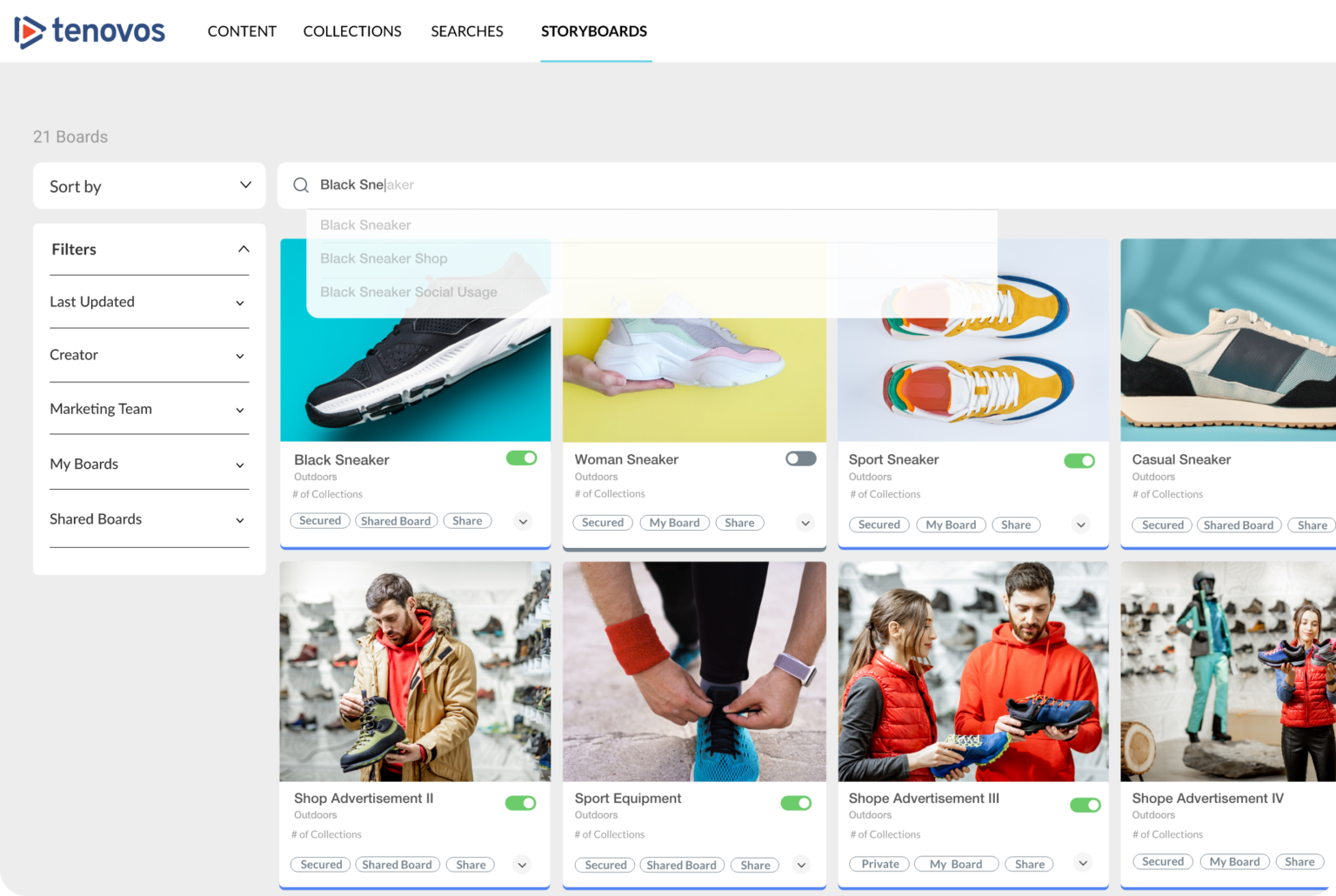
An organization’s ability to collaborate seamlessly with team members across — and outside of — the organization is also a key indicator of the success of a DAM implementation. Marketing doesn’t happen in a single silo; from research to ideation, to creation to deployment, marketing is interconnected and interdisciplinary. A modern DAM platform should connect the enterprise in such a way that it simplifies the creative life cycle and enables marketers to reduce the friction and time required to launch each new campaign.
Data-Driven Marketers Need Data-Driven Technology
The reality is that many of the DAM solutions available on the market currently have not kept pace with the evolving needs of the increasingly data-driven marketing operation; they’re often expensive, difficult to implement, and don’t deliver the user experience marketers and creative professionals have come to expect from their technology. Seen from this angle, it’s not surprising that many organizations are hesitant to invest heavily in a new system that is not capable of demonstrating a return on investment.
Brands need modern DAM platforms that not only enable them to meet the demands of marketing in the digital age, but also help them to demonstrate — and improve — their ROI. Marketers should expect their DAM platform to provide:
- A data-first approach to asset management that allows brands to measure and optimize their processes and their content to provide increasingly personalized experiences
- A seamless user experience that drives adoption and enables teams across the world to collaborate easily
- Performance and optimization capabilities underpinned by artificial intelligence and machine learning
- Continuous improvement and delivery to support the demands of a global omnichannel enterprise
At the end of the day, companies implement a DAM solution in order to optimize their processes and improve their ability to tell the compelling stories that are central to a successful marketing operation. This optimization should come not only in the form of improving the speed of creation, but also the strategy behind a given campaign. A system that has access to all of the contextual data that surrounds your every asset should be able to distill those data into insights that inform the creation of future content.
A modern, data-first DAM should act not only as a content database but also as a source of insight to enable marketers to make smarter creative decisions, which in turn allows them to tell stories that matter to their audience.
Want to know what types of data your DAM should be providing? Reach us at marketing@sifycorp.com
Written by Michael Waldron, CMO, Tenovos
How to Adapt Your IT Environment to Reach Your Business Goals
Define clear objectives
Start by clearly defining your objectives and business requirements. Understand what you want to achieve with your IT infrastructure, such as scalability, cost optimisation, or improved performance. These objectives will guide your decision-making throughout the process.Assess your current IT infrastructure
Conduct a thorough assessment of your existing IT environment, including both on-premises and cloud components. Identify strengths, weaknesses, and areas that need improvement. This assessment will help you understand the complexity you’re dealing with and identify areas for optimisation. Related Read: Learn more about our Cloud Assessment servicesDevelop a comprehensive strategy
Based on your objectives and assessment, develop a comprehensive strategy that outlines how you will deploy, manage, and optimise your IT infrastructure. This strategy should include considerations for security, performance, scalability, and cost management.Embrace automation
Automation tools can significantly simplify the management and deployment of complex infrastructures. Maximise automation by streamlining routine tasks, such as provisioning resources, scaling applications, or managing backups. Additionally, orchestration tools help you automate workflows and ensure smooth coordination between different components.Leverage cloud-native technologies
Cloud-native technologies, such as containers and microservices, can provide agility and scalability in managing complex infrastructures. Containers allow you to package applications with their dependencies, making them portable and easy to manage. Microservices architecture helps break down applications into smaller, loosely coupled services, simplifying development and deployment.Implement monitoring and analytics
Monitoring your IT environment is crucial for identifying bottlenecks, optimising performance, and ensuring availability. Implement robust monitoring and analytics tools that can provide real-time insights into the performance and health of your infrastructure. These tools can help you proactively address issues before they impact your operations.Optimise for cost and performance
Regularly review your infrastructure to identify areas where you can optimise costs and improve performance. This may involve rightsizing resources, optimising workload placement, leveraging reserved instances, or implementing cost optimisation frameworks provided by cloud providers. Related Read: Why is Cloud Optimisation Crucial?Encourage collaboration and skill development
Managing complex IT infrastructures requires collaboration between different teams, such as IT operations, development, and security. Encourage cross-functional collaboration and provide opportunities for skill development to ensure your teams have the necessary expertise to navigate the complexity.Stay updated with industry trends
The technology landscape is constantly evolving, and new tools and techniques emerge regularly. Stay updated with industry trends, attend conferences, participate in webinars, and engage with the community to ensure you are aware of the latest best practices and solutions.Consider working with an IT partner
Managing the complexities of IT environments can easily become overwhelming. Working with an IT partner that possesses extensive expertise and proven experience will speed up the execution of your strategy and provide valuable support to help you deploy, manage, and optimise your IT environment. Related Read: Learn more about Sify and the services we provideConclusion
As the complexity of IT environments continues to grow, organisations must adapt and evolve their strategies to navigate this landscape successfully. By clearly defining objectives, conducting holistic assessments, embracing hybrid and cloud architectures, leveraging automation, prioritising security, optimising performance and finding the right IT partner, businesses can navigate the complexities and achieve their desired outcomes. Most importantly, remember that deploying, managing and optimising your IT environment is an ongoing process. You need to regularly reassess your strategy, adapt to new challenges, and continuously optimise your infrastructure to stay ahead of the curve.How Sify Can Help
Sify is ideally placed to help businesses build a sustainable, fully optimised cloud infrastructure that meets long-term business needs. Sify offers deep expertise in all areas of cloud and IT infrastructure, combined with proven methodologies and frameworks to help analyse, design and optimise cloud environments. Our proven experience and expertise have delivered for organisations seeking to optimise their cloud infrastructures, including reducing costs and ensuring resources are right sized, accelerating deployment time for new applications, improving alignment between business functions and helping firms integrate new cloud-based technologies such as AI or analytics.The Key Challenges We Solve
With a heritage in IT Infrastructure, Sify has grown over two decades to provide a one-stop engagement across networks, data centre, cloud, digital and IT services. Sify enables you to build an IT infrastructure that underpins business profitability, by delivering flexible expertise to fill IT skills gaps, and by deploying, managing and optimising complex hybrid environments to deliver the right combination of flexibility, security and affordability. Here are the key challenges our Managed Services can help your organisation solve:
Optimisation
Future-proof your business by optimising your use of cloud technology

Resources
Increase responsiveness with access to the right scale and calibre of specialist IT skills as and when you need them

Cost Savings
Make your IT budget go further by lowering your costs and becoming more efficient

Reduce Risk
Control your risks by ensuring the security and resilience of your IT infrastructure
















